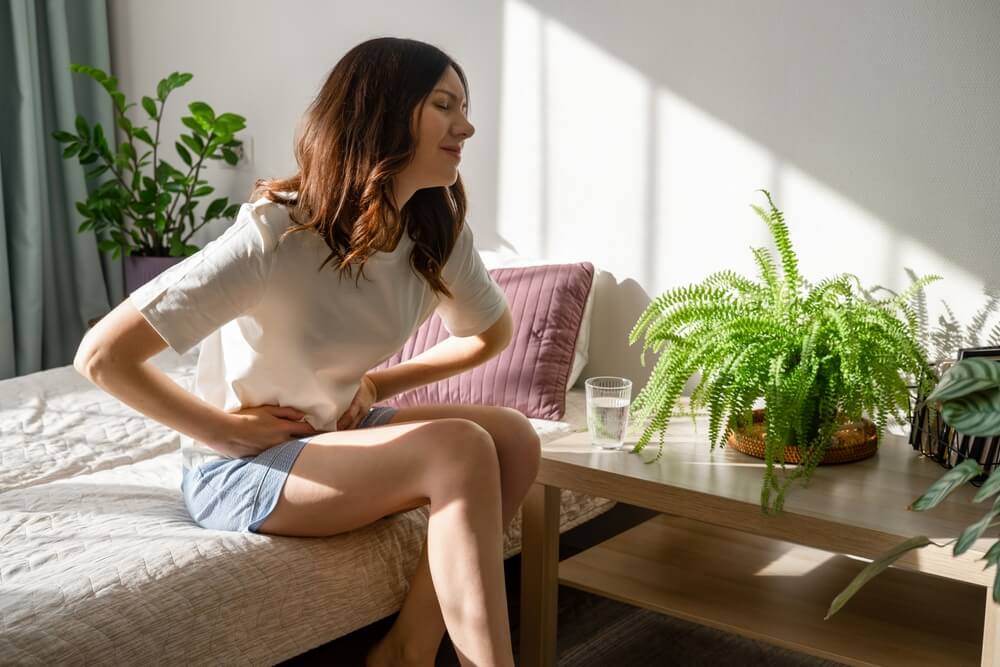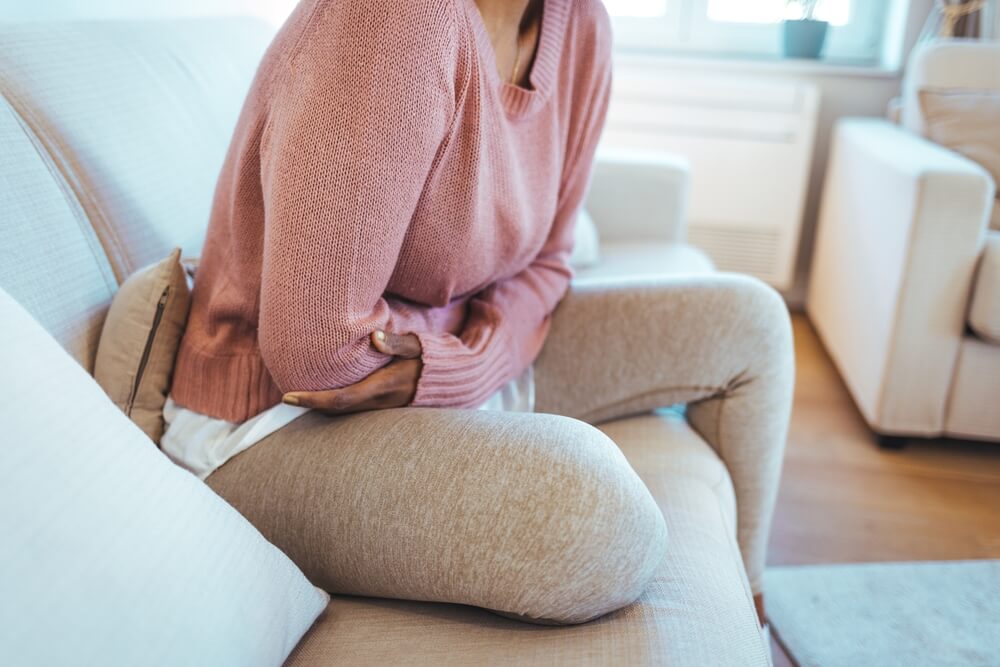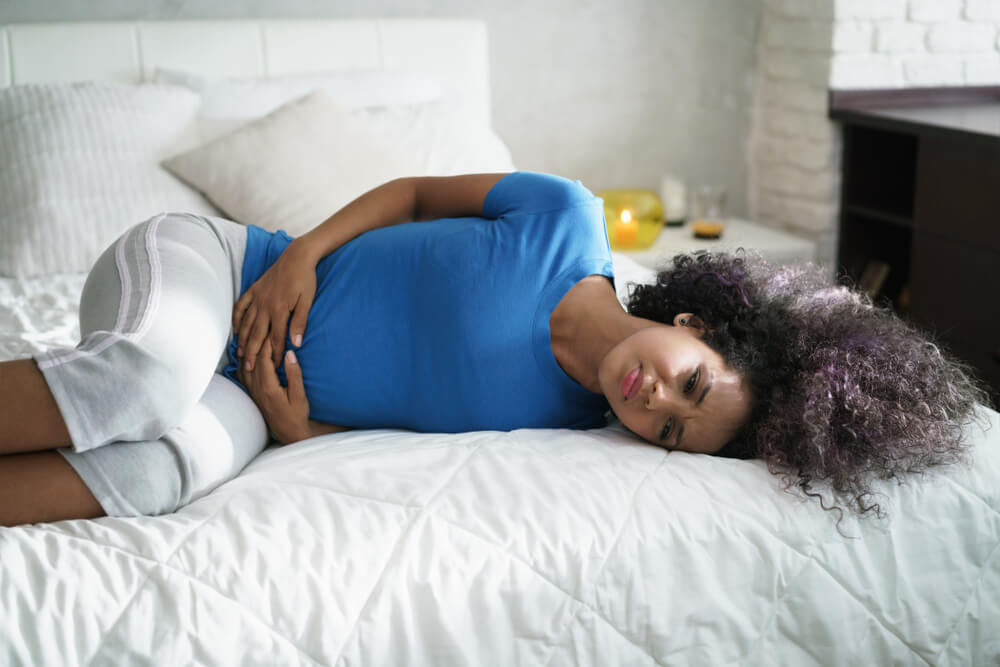For many women, the monthly arrival of their menstrual cycle brings with it the unwelcome companion of menstrual cramps. These cramps, also known as dysmenorrhea, can range from mild discomfort to debilitating pain, affecting daily activities and overall well-being.
In this comprehensive guide, Dr. Arunachalam Jothivijayarani and her team of expert gynecologists in Bradenton, Florida, explore effective strategies for period cramp relief, providing insights on how to relieve bad menstrual cramps and reclaim comfort during that time of the month.
Understanding Menstrual Cramps: A Common Challenge

Menstrual cramps are a natural part of the menstrual cycle, typically occurring just before and during menstruation. The cramps are caused by the contraction of the uterine muscles as the body sheds the uterine lining. While some women may experience mild cramping, others endure severe pain that interferes with their daily lives.
How to Relieve Bad Menstrual Cramps: Practical Strategies
Heat Therapy: The Soothing Power of Warmth
One of the most accessible and effective methods for period cramp relief is heat therapy. Applying heat to the lower abdomen helps to relax the uterine muscles and alleviate pain.
Hot Water Bottle or Heating Pad: Place a hot water bottle or heating pad on your lower abdomen for 15-20 minutes at a time. This simple remedy can provide immediate relief from menstrual pain.
Warm Bath: Soaking in a warm bath not only relaxes the muscles but also promotes overall relaxation, helping to reduce the intensity of cramps.
Over-the-Counter Pain Relief: Targeted Solutions
Over-the-counter pain relievers stand as accessible and often highly effective solutions for managing period pain. Nonsteroidal anti-inflammatory drugs (NSAIDs), including well-known options like ibuprofen, are widely recognized for their ability to alleviate menstrual cramps. Employing these medications strategically can make a substantial difference in the overall experience of discomfort during menstruation.
Follow Dosage Guidelines: Precision for Optimal Relief
When utilizing over-the-counter pain relievers, precision in adherence to dosage guidelines is paramount. The recommended dosage provided on the medication’s packaging is designed to offer optimal relief while minimizing the risk of side effects. Taking NSAIDs such as ibuprofen according to these guidelines ensures that the medication is at its most effective in managing menstrual cramps.
Consult with a Healthcare Professional: Personalized Guidance for Safety
While over-the-counter pain relievers are generally considered safe for short-term use, it’s essential to consider individual health circumstances. If you have any underlying health conditions or are taking other medications, consulting with a healthcare professional is crucial before incorporating over-the-counter pain relievers into your routine.
Considerations for Consultation
Medical History: Your healthcare provider can assess your medical history to identify any potential contraindications or interactions with other medications you may be taking.
Underlying Health Conditions: Individuals with conditions such as gastrointestinal disorders, cardiovascular issues, or renal impairments may need tailored advice on the use of NSAIDs.
Allergies and Sensitivities: If you have known allergies or sensitivities to specific medications, your healthcare provider can guide you toward suitable alternatives or recommend appropriate precautions.
Long-Term Use Considerations: Extended or frequent use of over-the-counter pain relievers may have implications, and your healthcare professional can offer insights into long-term strategies for managing menstrual cramps.
Physical Activity: Move to Alleviate Discomfort
Amid the challenges of menstrual cramps, the transformative influence of physical activity emerges as a dynamic and accessible strategy. Engaging in light exercise not only promotes the circulation of vital fluids throughout the body but also taps into the body’s natural reservoir of pain relief — endorphins. This holistic approach to menstrual cramp relief emphasizes the interconnectedness of physical well-being and the body’s innate capacity to mitigate discomfort.
Gentle Exercise: Walking, Yoga, and Stretching for Holistic Relief
Gentle exercise serves as a versatile and effective means of alleviating menstrual cramps. Consider incorporating the following activities into your routine to ease muscle tension and enhance overall well-being:
Walking: A simple yet powerful form of exercise, walking promotes blood flow and releases endorphins. A brisk stroll, whether outdoors or on a treadmill, can invigorate the body and provide relief from cramp-related discomfort.
Yoga: The practice of yoga offers a holistic approach to menstrual cramp relief, combining gentle movements, stretching, and mindfulness. Yoga poses such as Child’s Pose, Cat-Cow, and Downward-Facing Dog can specifically target areas of tension and encourage relaxation.
Stretching Exercises: Incorporate gentle stretching exercises to release tension in the muscles surrounding the pelvic area. Focus on stretches that engage the lower back, hips, and thighs, helping to ease cramp-related discomfort.
Pelvic Floor Exercises: Strengthening for Lasting Relief
Specifically targeting the pelvic floor muscles through exercises like Kegels can be a proactive and empowering strategy to reduce the severity of menstrual cramps. The pelvic floor, a network of muscles that supports the pelvic organs, plays a crucial role in reproductive health. Strengthening these muscles enhances their ability to support the uterus, potentially mitigating the intensity of cramps.
Incorporating Pelvic Floor Exercises
Kegels: Kegel exercises involve contracting and relaxing the pelvic floor muscles. To perform Kegels, identify the muscles you use to stop the flow of urine and contract them for a few seconds before releasing. Repeat this process in sets, gradually increasing the duration and intensity as your muscles become stronger.
Bridge Pose: In yoga, the Bridge Pose is an effective way to engage and strengthen the pelvic floor. Lie on your back, bend your knees, and lift your hips toward the ceiling, engaging your pelvic muscles. Hold the pose for several breaths before gently lowering back down.
Pelvic Tilts: While lying on your back with knees bent, gently tilt your pelvis upward, engaging the abdominal and pelvic muscles. Hold for a few seconds before releasing. This movement can be repeated to promote flexibility and strength in the pelvic region.
Herbal Teas and Supplements: Nature’s Remedies
Certain herbs and supplements have been found to offer period cramp relief by addressing inflammation and muscle relaxation.
Ginger Tea: Known for its anti-inflammatory properties, ginger tea can be soothing and beneficial for relieving menstrual cramps.
Magnesium Supplements: Some studies suggest that magnesium supplements may help reduce the intensity and duration of menstrual cramps.
Mind-Body Techniques: Holistic Approaches to Relaxation
In the realm of holistic wellness, mind-body techniques emerge as powerful allies in the pursuit of relaxation and overall well-being. These practices go beyond addressing physical symptoms, reaching into the realm of mental and emotional balance. When it comes to relieving menstrual cramps, incorporating mind-body techniques into your routine becomes a valuable tool for nurturing harmony within.
Deep Breathing: The Essence of Serenity
Deep breathing exercises stand as a cornerstone of mind-body practices, offering a simple yet profound way to recalibrate the nervous system and release tension.
Abdominal Breathing: Begin by finding a comfortable seated or lying position. Inhale deeply through your nose, allowing your diaphragm to expand fully. Exhale slowly through your mouth, feeling your abdomen gently contract. Repeat this process for several minutes, focusing your attention solely on your breath.
Box Breathing: Also known as square breathing, this technique involves inhaling, holding the breath, exhaling, and pausing for equal counts. For example, inhale for a count of four, hold for four, exhale for four, and pause for four. This rhythmic pattern promotes a sense of calm and centeredness.
Meditation and Mindfulness: Cultivating Inner Tranquility
Meditation and mindfulness practices delve into the art of being present, fostering a heightened awareness of the mind and body. By cultivating inner tranquility, these techniques empower individuals to face discomfort with resilience and a clear state of mind.
Guided Meditations: Explore guided meditations tailored to relaxation and pain relief. Many apps and online platforms offer guided sessions specifically designed for managing menstrual cramps. These guided meditations often incorporate visualization and positive affirmations to enhance the overall experience.
Body Scan Meditation: This mindfulness practice involves directing focused attention to different parts of the body, starting from the toes and gradually moving up to the head. It promotes a sense of relaxation and awareness, helping to release tension and reduce discomfort.
Mindful Walking: Engage in mindful walking, where each step is taken with deliberate awareness. This practice can be particularly helpful during times of physical discomfort, encouraging a connection with the present moment.
Journaling for Mindfulness: Combine mindfulness with self-reflection by keeping a journal. Write about your thoughts and feelings during moments of discomfort, allowing the process of expression to contribute to a sense of emotional release.
The Integration of Mind-Body Techniques: A Holistic Lifestyle Approach

The true potency of mind-body techniques lies in their integration into a holistic lifestyle approach. Rather than viewing these practices as isolated remedies, consider incorporating them into your daily routine for ongoing support in managing menstrual cramps.
Create a Daily Ritual: Establish a daily ritual that includes a few minutes of deep breathing or mindfulness meditation. Consistency is key, and these practices can be seamlessly woven into your morning or bedtime routine.
Mindful Movement: Combine mindfulness with movement through practices like yoga or tai chi. These gentle exercises not only promote physical well-being but also enhance the mind-body connection, contributing to a sense of overall harmony.
Helping Women to Find Relief
Menstrual cramps are a common and often challenging aspect of a woman’s menstrual cycle. By implementing a combination of these practical strategies for period cramp relief, women can find the relief they need to navigate this natural part of their reproductive health. Whether it’s the soothing warmth of heat therapy, the targeted relief of over-the-counter medications, the benefits of physical activity, the natural remedies of herbal teas, or the holistic approaches of mind-body techniques, there are various tools at a woman’s disposal to alleviate bad menstrual cramps and restore a sense of comfort during this time of the month. As always, consulting with a healthcare professional for personalized advice is advisable, especially if menstrual cramps are severe or interfere significantly with daily life.
That said, feel free to reach out to us any time with your questions or concerns.


